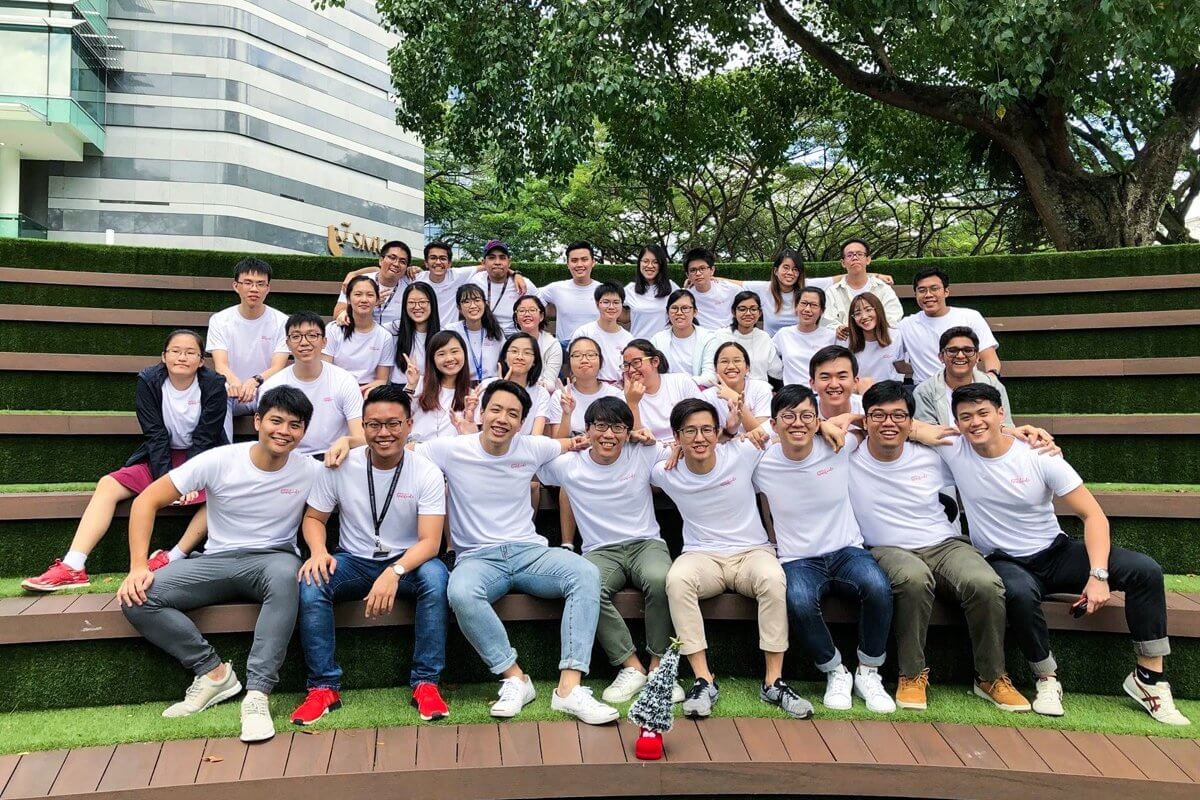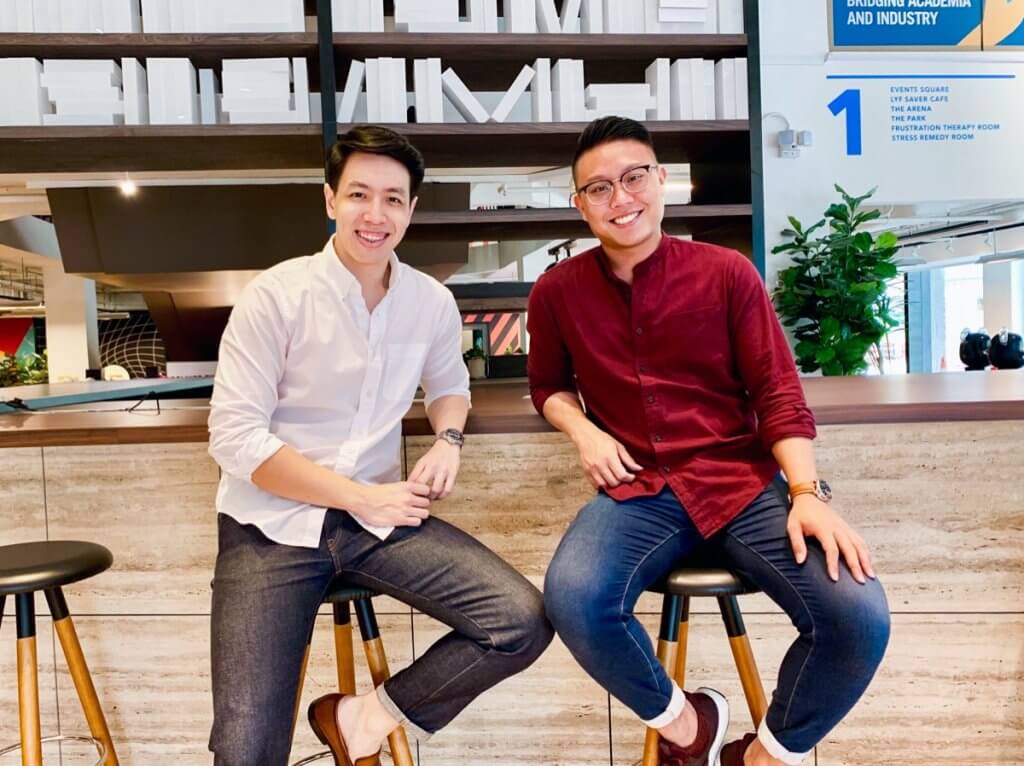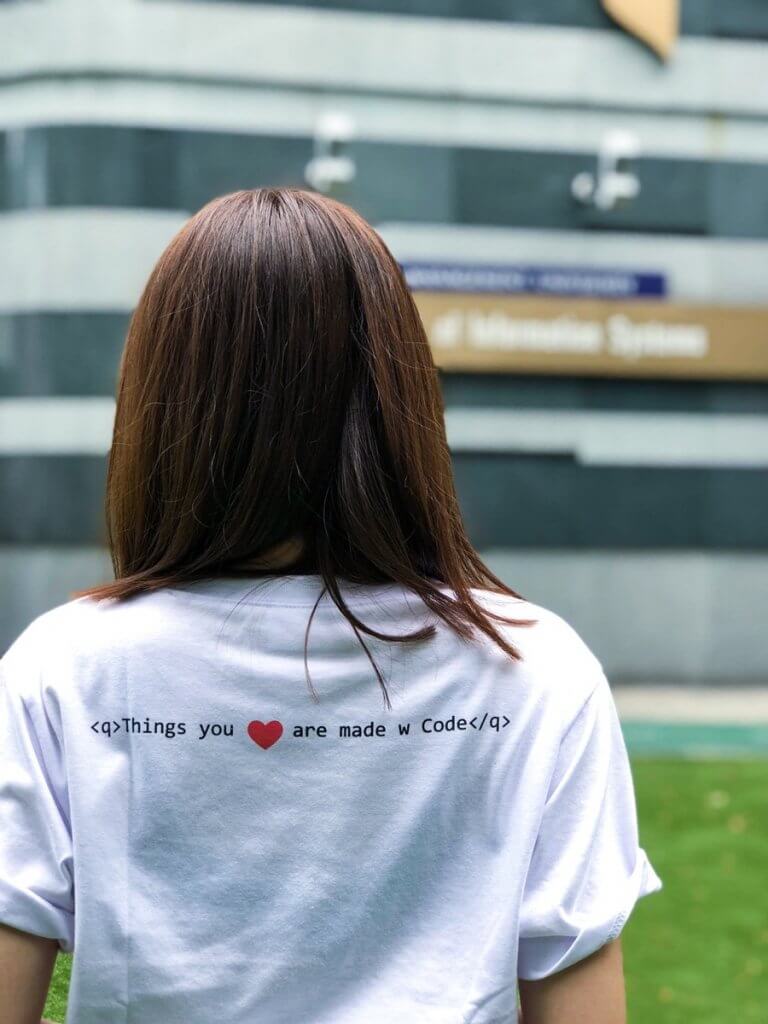
Technology now reigns supreme. And in this tech-dominated world, no one should be denied a chance to master tech-savviness.
Project HeartCode is an initiative by Ellipsis, the student representative body of the School of Information Systems (SIS) at Singapore Management University (SMU), which helps to introduce underprivileged youths to various programming languages.
Started by recent Bachelor of Science (Information Systems) graduates Zul Yang Guo Qiang and Manfred Loh Pei En, the initiative is also a collaboration with SMU Devera, a special interest group of tech-savvy entrepreneurial students who seek to help fellow students expand their technical expertise and project management abilities by taking on real-world projects for clients. As the inaugural community service project under Ellipsis, Project HeartCode is the first of many different ways that will be dedicated to helping SMU SIS students play a part in the community.

Zul and Manfred who recently graduated in the Class of 2019 cohort
As Singapore moves towards its vision of becoming a Smart Nation and the demand for technology professionals rises, it is crucial that the next generation of youths are not just consumers of technology, but also understand how it works. Zul and Manfred share their mission and vision behind Project HeartCode, and how they help students gain exposure to programming.
The birth of Project HeartCode
 Even as a freshman in SIS, Zul had already identified the need to provide equal opportunity for individuals to learn about technology and programming, especially among underprivileged youths in Singapore.
Even as a freshman in SIS, Zul had already identified the need to provide equal opportunity for individuals to learn about technology and programming, especially among underprivileged youths in Singapore.
“With the rapid development of technologies and digitalisation, programming knowledge has become more essential than ever. However, individuals may not have the necessary materials or know-how to begin their journey in technology,” Zul recalls.
Inspired by this raison d’être, Project HeartCode was born. Zul and Manfred created a platform where youths could begin their journey in technology and gain access to fundamental technology concepts.
“Since we were SIS students, we felt that we could leverage our technology knowledge to empower others and give back to society. As our idea actualised and the project gained traction in our sophomore year, we began to seek funding and started reaching out to beneficiaries,” says Zul.
“What was deeply heartening was the immense support we received from fellow SIS students, many of whom later shared that they had been waiting for an opportunity like this. We are so grateful for every individual who helped to make Project HeartCode what it is today.”
How it worked
When it came to designing the curriculum for Project HeartCode, Zul and Manfred took into consideration how they would like the programme to impart basic technical skills to students. They also wanted to ensure that the curriculum helps students gain awareness of key social issues while remaining interactive enough to drive their interests.
With these considerations in mind, Zul and Manfred decided on a five-day duration for the web development course. At the end of the course, students should be able to create their own website, complete with informational web pages showcasing social issues such as animal cruelty and racial harmony.

“Web development skills are applicable to many different situations in life and this is something that will benefit students greatly. Being able to see their code ‘transform’ into something on their website with just a click of the refresh button also helps to keep the students interested,” says Manfred.
“The first four days are spent providing them with the necessary knowledge to develop a basic web page, and our volunteers serve as mentors to guide them through the process. On the fifth day, we give each of the students an opportunity to present their web page to everyone. You can view the students’ work on smuheartcode.sg,” Manfred reveals.
“At the end of the programme, we conduct a survey with the students to better understand how to further improve ourselves for future runs of the project. So far, most of our students have indicated that the pace was suitable, and they would be interested to return to learn more.”
Where does it go from here?
There have been annual runs of Project HeartCode since its pilot for Bukit Panjang Government High School’s financial aid students in 2017. The second run was for students of Bendemeer Secondary School and the third edition is currently being planned for December 2019.

Zul and Manfred have managed to secure funding from a member of the SIS Advisory Board and the Lee Foundation, Mr Ng Kai Wa, and also worked with Bukit Panjang Government High School students under the financial aid scheme in 2017. Right now, the team is approaching organisations for a partnership on financial aid for the participating students.
“2018 saw the second run of Project HeartCode, which was led by Goh Jin Qiang and Sim Xuesi, both of whom were volunteers in the pilot run, and have worked with Bendemeer Secondary School. With the increasing adoption of the Internet of Things (IoT), the curriculum for the second run was widened to include IoT components which complemented the original web development segment. This enabled the students to work on exciting IoT projects that revolved around social issues,” Zul recalls.
So far, the programme has been quite the success. In fact, students have even gone the extra mile to add their individual flair to each website design, thus showing a personal investment in their chosen cause.

“The students were able to come up with really fascinating web pages about social issues they were passionate about — each with their own unique style, going beyond whatever was taught by combining different elements of the curriculum. We could see the heart they put into every submission,” Manfred says.
Project HeartCode aims to provide all youths, regardless of their backgrounds, with an equal opportunity to learn about programming and technology. Through this platform, Zul, Manfred and the programme’s volunteers hope to youths to pursue technology either as a career or hobby, which could impact our society positively and spark change.
“In the near future, they too could inspire other youths and empower them—it’s a continuous cycle of impact creation. With that, together with the volunteers, we hope to create an inclusive and supportive technology community that continuously empowers, with the aim to impact lives.”

